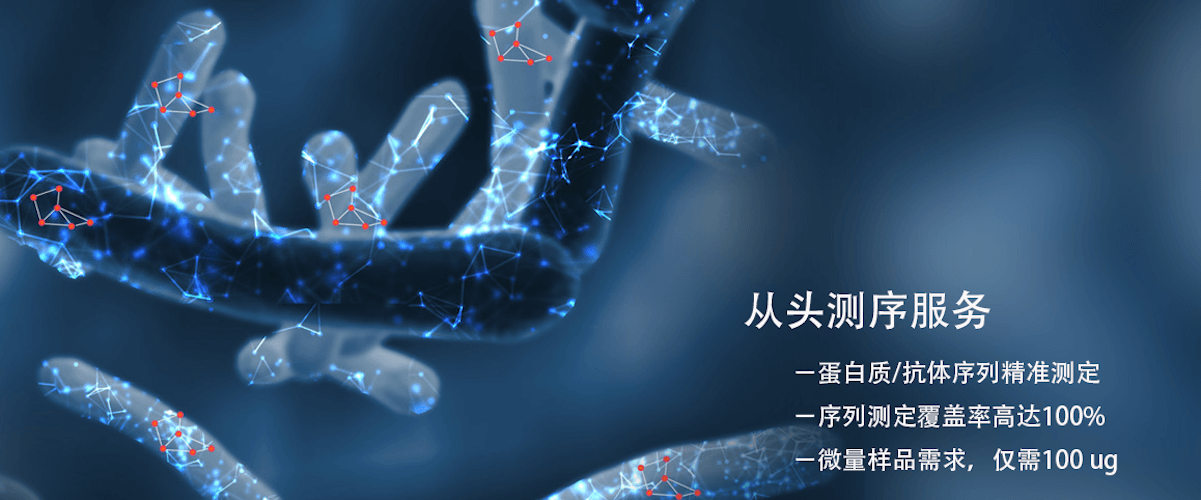Unknown Protein Sequencing
The amino acid sequence of a protein is the foundation that determines the structure and function of the protein. Protein sequencing is the process of determining the types and arrangement of amino acids in a protein, which is an important aspect of proteomics research.Common methods include mass spectrometry (such as tandem mass spectrometry) andEdmandegradation.Unknown proteins usually refer to those proteins that have not been fully studied or described. These proteins may be encoded by newly discovered genes or known gene products in organisms, but their structure, function, and role are not yet fully understood.Unknown protein sequencinghelps to reveal the full picture of an organism's genome and proteome,,and is of critical importance for studying protein structure and function, and advancing fields such as biotechnology, drug development, and disease diagnosis.
Biotech company BTP utilizes Thermo's newly launched Orbitrap Exploris 240 mass spectrometer to achieve sequence analysis of unknown protein samples. By using six common proteases (Trypsin, Chymotrypsin, Asp-N, Glu-C, Lys-C, and Lys-N) to enzymatically digest and perform mass spectrometry on target proteins, it enables 100% sequencing of protein sequences through peptide fragmentation and subsequent reconstruction.
BiotechBTPUnknown protein sequencingprocess
1. Sample preparation:
Extract proteins and remove impurities through purification processes.
2. Protein fractionation/separation:
Fractionate or separate protein samples, commonly using one-dimensional or two-dimensional gel electrophoresis (1D/2D-PAGE) and liquid chromatography (such asHPLC) and other methods.
3. Protease digestion:
Decompose proteins into smaller peptides through multiple enzymatic digestions (such asTrypsin, Chymotrypsin, Asp-N, Glu-C, Lys-C, and Lys-N)to facilitate subsequent mass spectrometry analysis..
4. Peptide separation:
Use liquid chromatography (such as reverse-phase high-performance liquid chromatography,RP-HPLC) to further separate peptides obtained after protease digestion.
5. Mass spectrometry analysis:
Analyze peptides using a mass spectrometer, where mass spectrometry results provide information on peptide mass, charge state, etc.
6. Peptide sequencing:
Perform further sequencing of peptides through tandem mass spectrometry (such asMS/MS).
7. Data processing and analysis:
Use specialized mass spectrometry software such as Mascot, Sequest, and integrate known protein databases to analyze and process mass spectrometry data.
Main applications of unknown protein sequencing technology
1. Discovery of new proteins:
By sequencing and annotating unknown proteins, new biological catalysts, signal transduction proteins, transcription factors, and other molecular functions can be discovered.
2. Protein function research:
Provides data support for functional annotation and protein interaction network research through protein sequencing.
3.Disease biomarker discovery:
By comparing proteomes of pathological and normal tissues, potential disease biomarkers can be identified, providing clues for disease diagnosis and treatment.
4. Drug development:
Used to identify target proteins of drugs,find new drug targets,and help accelerate the development and optimization of new drugs.
About samples
We accept the following types of samples:
1.Purified proteins:Please provide protein samples with purity above 85%, with a recommended sample amount of 50-200 μg, and protein concentration should be between 0.1-1 mg/mL..
2.Proteome extracts:Including but not limited to proteome extracts from cells, tissues, or organisms. The recommended sample amount is 200-500 μg, with a protein concentration between 1-5 mg/mL.
3. Protein gel spots/strips: 1D-SDS PAGE separated protein gel strips, protein gel spots in 2DE PAGE, IP, Co-IP samples, and protein/protein mixtures from GST fusion protein pull-downs. For gel spots and strips, please ensure the protein content is at least 10 ng. For immunoprecipitation samples, please provide at least 20 μg of protein.
Bilingual project report
In the technical report, BTP will provide you with a detailed bilingual (Chinese and English) technical report, including:
1. Experimental steps (in Chinese and English)
2. Relevant mass spectrometry parameters (in Chinese and English)
3. Detailed information on unknown protein sequencing
4. Mass spectrometry images
5. Raw data
One-stop service for unknown protein sequencing
You only need to place an order and send samples
BTP provides a one-stop service: sample processing, instrument analysis, data analysis, and project report completion
Related services
De novo protein sequencing and mutation analysis
Complete protein sequence determination
Protein N/C terminal sequencing
Biopharmaceutical N/C terminal sequencing
Mass spectrometry-based sequence analysis
Edman degradation-based protein N-terminal sequencing
PCR amplification-based monoclonal antibody sequencing services
Top-down protein sequencing method
How to order?





